Tactical urbanism and other grassroots approaches to sustainable urbanism
What does tactical urbanism mean?
Urbanism has two possible main meanings. The first one is «characteristic way of life of city dwellers». The second one refers to «city planning, or the drawing up of an organized arrangement (as of streets, parks, and business and residential areas) of a city».
Tactic has two possible meanings as well, the first one «refers to military maneuvering» and the second one is: «the art or skill of employing available means to accomplish an end».
We may deduce that tactical urbanism aims to improve the way of life of city dwellers with the minimum available means.
Tactics are considered to be an alternative to strategies, and Micheal de Certeau defined these two concepts as follows:
I call a strategy the calculation (or manipulation) of power relationships that becomes possible as soon as a subject with will and power (a business, an army, a city, a scientific institution) can be isolated.
A strategy is implemented by an actor, that owns an institution or a place, that by it’s own position of power try to extend its influence over an environment where the “Other ” is present.
I call a “tactic,” on the other hand, a calculus which cannot count on a “proper”.[…] A tactic insinuates itself into the other’s place, fragmentarily, without taking it over in its entirety, without being able to keep it at a distance.
A tactic adapts to pre-existing conditions, conditions that can’t be changed from a position of established power.
The “proper” is a victory of space over time. On the contrary, because it does not have a place, a tactic depends on time —it is always on the watch for opportunities that must be seized “on the wing.”
This definition has been used by many urban practitioners, but is less and less diffused amongst professionals. Even if in the beginning tactical urbanism was somehow linked to bottom up urban actions, after the Covid Pandemic, many Institutions adopted the term to design public interventions, subverting the main difference between strategy and tactic.
What is tactical urbanism?
«Tactical urbanism short term actions for a long term change» is a book published in 2015, co-written by the founder of Street Plan collaborative, an agency that operates with public administrations. This is probably the reason why the difference between tactical and strategic started to dissolve; ironically with the publication of the book named after the new approach.
The main difference between this approach and the previous urban planning attitudes consist in two points:
-Privileging short term actions with low budget instead of long term projects with huge investments
-Involving many actors as opposed to the orthodox planning practice where the design of the urban environment is delegated to closed groups of professionals.
These two differences allow a better involvement of the community addressed by an urban project and it allows experiments that can be corrected along the way, instead of delivering a project after years of public works. The experiments can be done because of the low budget invested, and the positive result of the experiment is increased because of the direct involvement of future users.
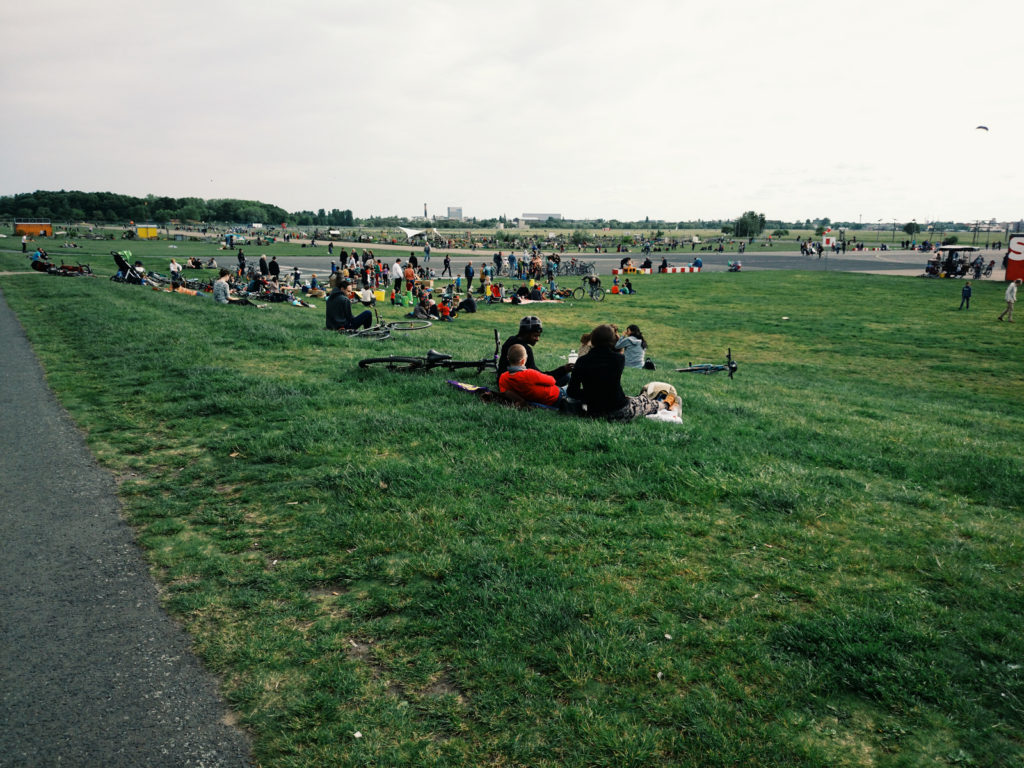
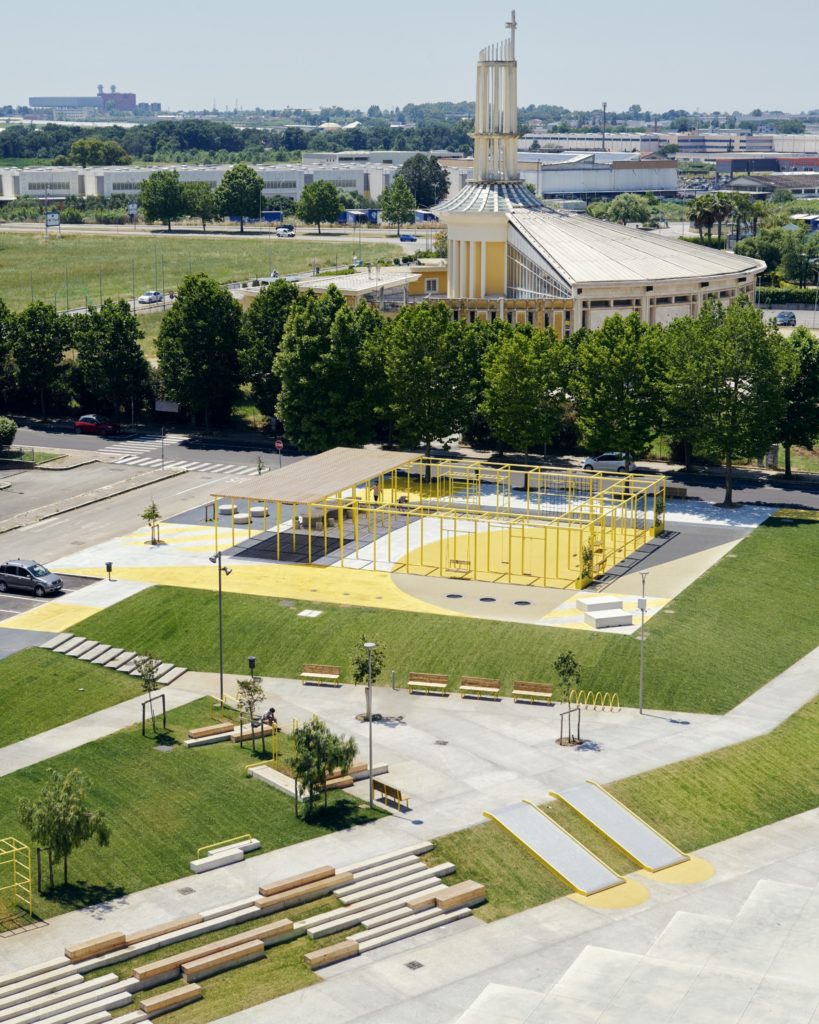
These two differences allow a better involvement of the community addressed by an urban project and it allows experiments that can be corrected along the way, instead of delivering a project after years of public works. The experiments can be done because of the low budget invested, and the positive result of the experiment is increased because of the direct involvement of future users.
Other Grassroots approaches and Incremental Urbanism
Some other grassroots approaches exist: Placemaking, DIY architecture, urban acupuncture, etc. They all revolve around the two points underlined about tactical urbanism, sometimes with few different operative measures.
Another definition that is more and more used by scholars and practitioners is Incremental Urbanism, an approach first developed by RaumLabor in the Tempelhof airfield by RaumLabor(fig.1), where they defined a Dynamic Masterplan, that could evolve with the interactions of users and actors.
Incremental means «of, relating to, being, or occurring in especially small increments».
This term means that few actions are developed, not necessarily with a low budget or in a temporary way, and that there is a possibility for changes along the way, both in the agenda and in the design.
One of the first Italian example of incremental urbanism is the project:”Prossima Apertura” in Aprilia (fig.2), developed by multiple partners led by the collective Orizzontale.
The motto of this collective, that usually operates at a smaller scale building their own installations, is “DIY architecture for common spaces”. For the project of Aprilia they designed a process, instead of the classical design project, to integrate many actors and various possible evolutions along the urban transformation of an urban void and an abandoned park.
Incremental Urbanism is also the preferred definition used by the Global Designing Cities Initiative, a program developed initially by the National Association of City Transport Officials, to become an independent organization. NACTO started to develop urban incremental actions in 2007, developing bikelanes and the NYC Plaza Program.
The incremental approach consists in:
1- collecting common wills about a place presented by a group of actors.
2- Organizing a preliminary one day event to present a possible project to the community involved in the project.
3- Collecting data about the specific urban space to be transformed.
4- Design a temporary intervention.
5- Collect data about possible improvement.
6- In the end, if everything goes well, design and build the definitive version of that space.
All the steps provide, as underlined before, time and occasion to correct the design. After NACTO developed many project, they gave birth to GDCI, to export this approach in other cities. In Milan exists AMAT, the office that develops incremental intervention in the city, mainly with the program Milano Piazza Aperte(fig.3).
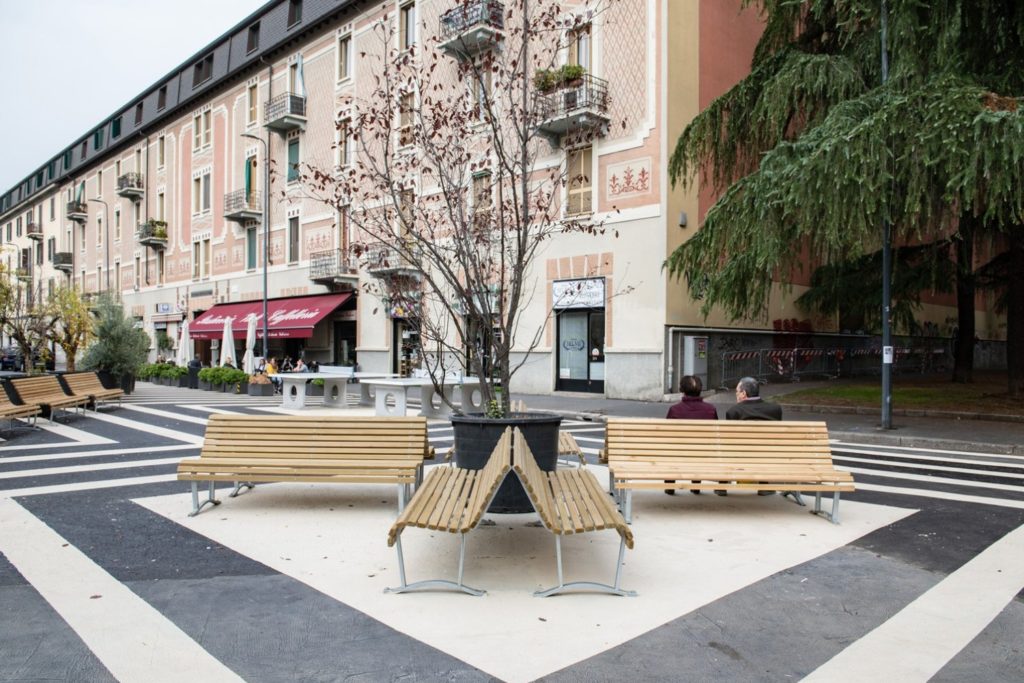
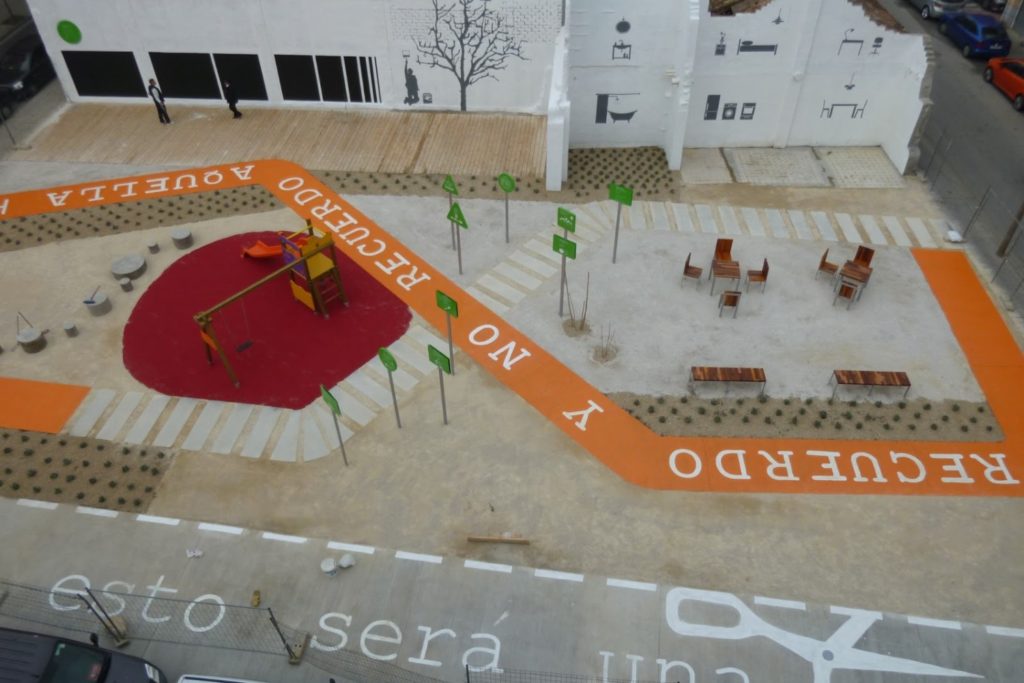
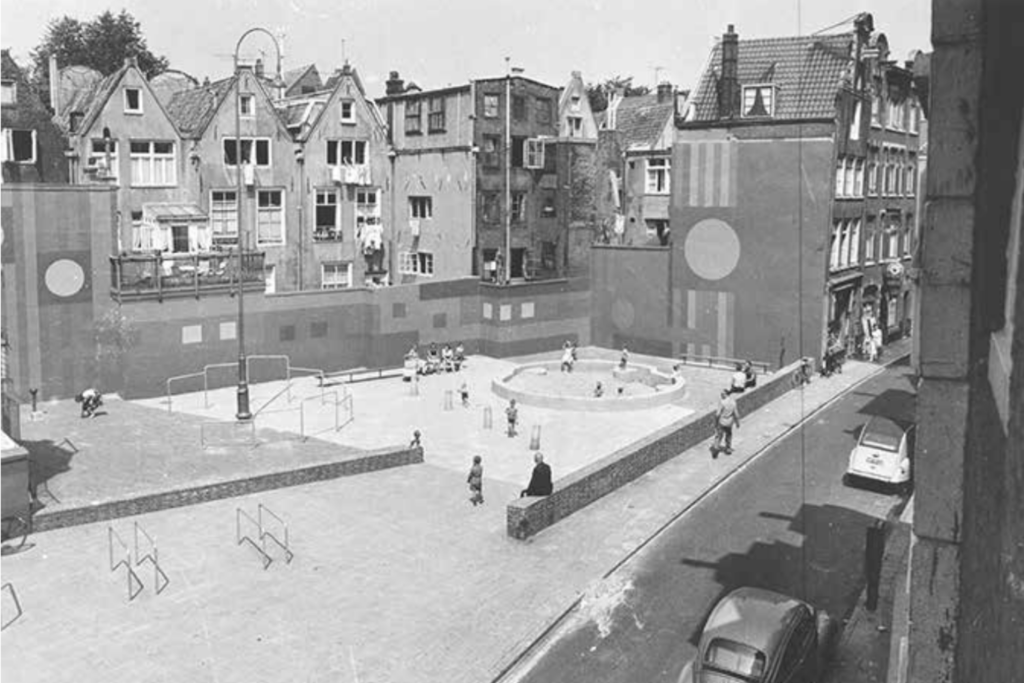
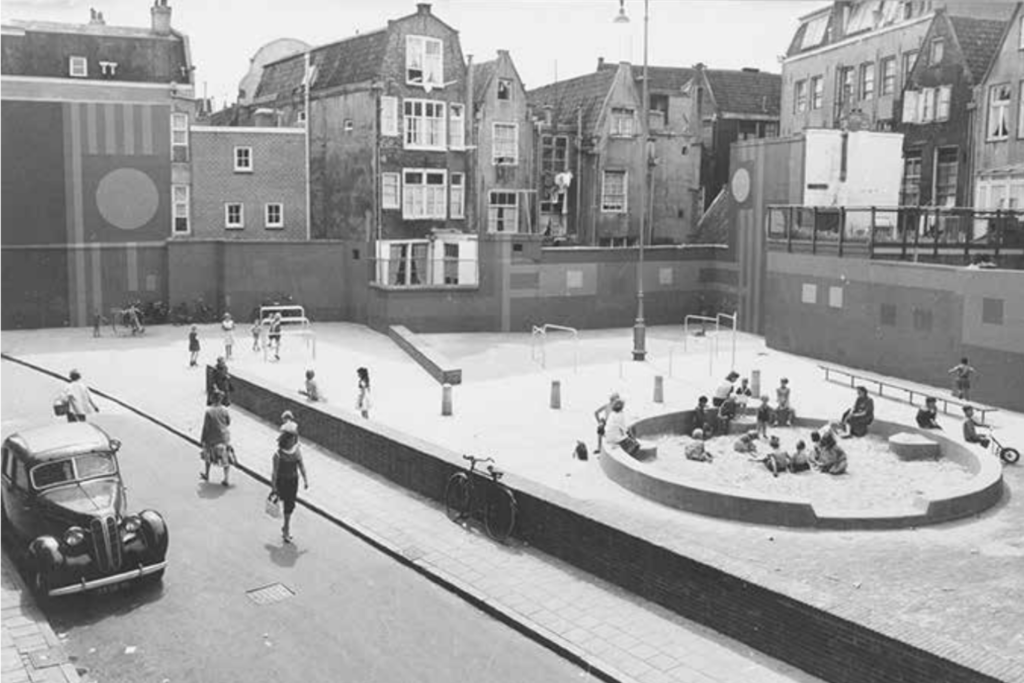
Esto no es un solar[1] is another project(fig.4) that established a milestone in this kind of approach. In 2008, after the economic crisis that broke the World and the Spanish economy, two architects were commissioned to develop a public program that could create jobs and at the same time that could rehabilitate urban parcels that were abandoned. The aim of the project was to rehabilitate places with a low budget in material and a massive workforce.
Continuing this travel back in the history of alternatives ways of addressing urban problems, we find the playgrounds of Aldo Van Eyck in Amsterdam[2].
After World War II Amsterdam presented many parts of the city destroyed or abandoned. The City Planning office of the Municipality decided then to entrust Aldo Van Eyck with a small set of experiments to be implemented in these abandoned urban spaces, transforming them in playgrounds (fig.5&6). The program expands in the following years, producing over seven hundreds playgrounds, all different but with the same design principles.
1- A structure to be climbed, with similar structural elements but always assembled to be different in every place.
2- The sandpit integrated in the design of the ground, always present but with different shapes.
3- The design of the ground in different materials, that allowed a proper fitting of every new intervention in every specific urban setting.
4- Community involvement: the choice of where to locate new playgrounds shifted rapidly by the hands of the Planning office to the will of citizens. After the firsts playgrounds were realized, many citizens started to write letters to the office asking to build new interventions near their homes, highlighting specifics urban voids to be transformed by the municipality.
5- Community feedback: Letters about implementations started to arrive as well, where citizens asked for changes in the designs of the sandpit and others details.
6- Paint. Another fundamental feature of tactical urbanism and incremental urbanism, that is now widespread, was initially applied by Van Eyck: paint. In one of the playground that was surrounded by the walls of adjacent buildings, the artist Joost van Roojen was commissioned to paint these surrounding walls with an abstract but geometric drawing, so that all the different walls looked integrated in the project.
The use of colors is fundamental in all these new approaches because it transforms visually a place, in a short time and with a low budget.
7- Temporariness is the last, but not the least, feature of the playgrounds. The design of time, of the process, is fundamental in contemporary Urban Praxis. The playgrounds were supposed to be temporary, as all the experiments presented in this text are.
The design of interim phases for any urban design, even if huge, is fundamental. Time is a tool at the disposal of the neo-liberal urban transformation too. Temporary and Meanwhile uses can be adopted by investment funds to sweeten the deal in many privatization processes of the urban environment. That is why is preferred to use the term Incremental Urbanism to Meanwhile uses, because incremental means that will change in shape but not in ownership, while the temporary uses can change in shape but also in ownership, as for example happens in Manifattura Tabacchi in Florence. At the same time, tactical urbanism can be used by municipalities to pretend they are making an effort to improve an urban environment, as in painting a bike lanes. Not designing them well and not deploying several tactics makes painted bike lanes useless.
Findings
The problem with the appropriation of radical innovation is inherent in the history of humanity. Radical concepts are appropriated by actors that try to capitalize on them: they sell radical images for a profit while emptying them of meaning and function. It’s notorious that Airbnb creates local communities of renters and managers of many apartments. This kind of community involvement become s a tool for the agenda of the big society to fight locally against any possible limitation that a local municipality could try to impose over the business.
Obviously, the appropriation is easier if made by an Institution (that operates strategically), but can also happen because of an “Instant activist”[1]: a person that adopts a formal language used by social innovators, but that operates that language without the proper structure and modus operandi.
The GDCI operation in Milan, that led to the program Piazze Aperte, was financed by Bloomberg Associates, and it’s probable that the program was financed because of a company agenda.
Tactical Urbanism is a term that can be used, because nowadays it’s used also by non-professionals, but at the same time it’s important to pay attention to the details of any project or approach.
The projects presented in this text are contributing to the improvements of the urban environment in many ways:
1- With participatory processes that help in building communities and in growing a collective consciousness
2- In improving the freedom of assembly by creating new spaces of socialization
3- In improving freedom of expression, both including citizen in the design of their environment and in creating new possibilities of action in the public space.
4- When they are about building bike lanes or new bus System, as in the case of Curitiba, they improve the freedom of mobility.
These freedoms – of expression, of assembly and of movement- are the main characteristics of a good urbanity, as Sorkin wrote many years ago.
If a project or a design improve one of these three freedoms, it’s a good starting point.
